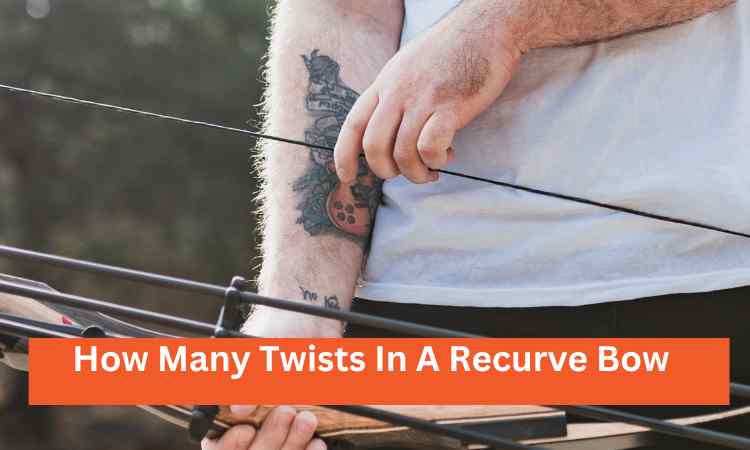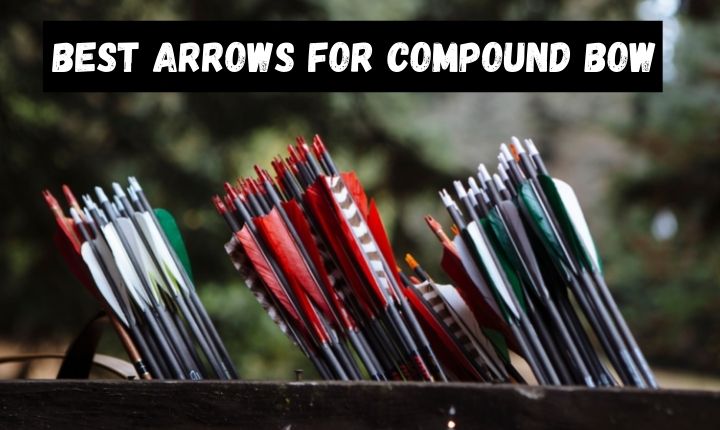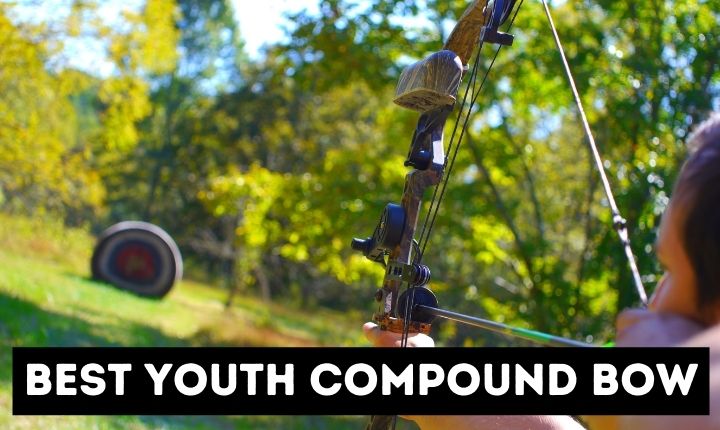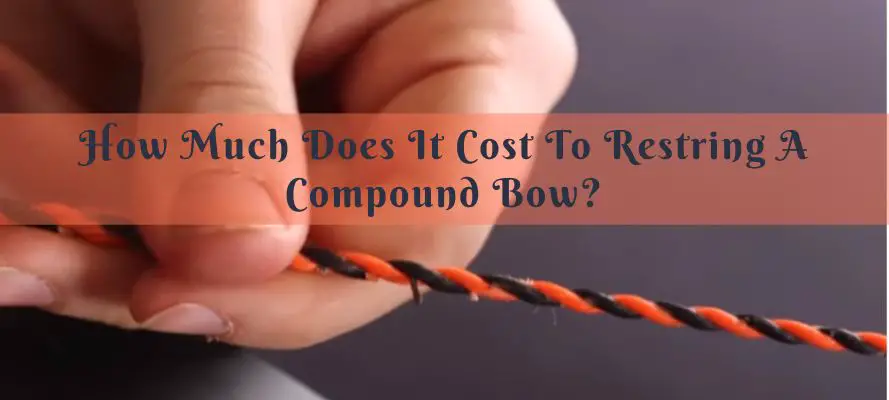Are you wondering about the number of twists in a recurve bow string?
Well, let me share an interesting fact with you! When it comes to a good recurve bow string, experts generally recommend having around 12 to 15 twists.
This twist count is believed to offer optimal performance for your bow. However, different sources provide slightly different recommendations.
For instance, BCY suggests starting with a twist rate of 0.5-0.75 per inch, while other advises a minimum of 10 to 12 twists. But here’s something intriguing: even if you end up with a total of 40 or 50 twists, it won’t cause any harm if you have a running loop string.
So, whether you’re an experienced archer seeking the perfect twist count or a curious beginner eager to learn, let’s delve into the world of recurve bow strings and explore the recommended numbers for achieving the best results.
Get ready for a fascinating journey.
What If I Twist More In My Recurve Bow String?
Optimally, a recurve bow string typically has around 12 to 15 twists. This range is considered ideal for achieving optimal performance and arrow flight.
When you stay within this recommended twist count, you ensure that the string maintains the desired tension and that the bow functions properly.
However, if you decide to twist your bow string beyond this range, there are a few factors to consider:
Positive Effects:
Increased Brace Height:
Adding extra twists can raise the brace height, which is the distance between the bowstring and the bow grip. This can potentially improve arrow speed and energy transfer.
Negative Effects:
- Overly High Brace Height: Excessive twists can cause the brace height to become too high. This can negatively impact the bow’s performance, reducing arrow speed and decreasing accuracy.
- Altered String Length: Twisting the bow string excessively can cause it to become shorter. This may require you to readjust the string length or replace it entirely to ensure proper fit and function.
- String Fatigue: Continuously twisting the string beyond the recommended count can lead to premature wear and fatigue, increasing the likelihood of failure.
It’s important to note that the exact effects of twisting your recurve bow string beyond the recommended count may vary depending on various factors such as bow design, string material, and personal shooting style.
Therefore, it’s advisable to consult with a knowledgeable archery professional or experienced bow technician to determine the optimal twist count for your specific bow and shooting needs.
Why Twists In A Recurve Bow String Are Important?
Twists in a recurve bow string are important for several reasons:
Transferring energy: The twists in a recurve bow string help to transfer the energy stored in the bow to the arrow when the bow is drawn and released.
The number of twists in the string can affect the balance of tension and energy transfer, which can impact the accuracy and power of the shot.
Stabilizing the string: Twists in the string can help to stabilize the string and prevent it from vibrating or twisting excessively when the bow is drawn and released.
This can help to improve the accuracy and consistency of the shot.
Reducing friction: Twists in the string can help to reduce the amount of friction between the string and the arrow, which can improve the efficiency of the energy transfer and increase the speed of the arrow.
Enhancing comfort: The number of twists in a recurve bow string can also affect the comfort and feel of the bow for the archer.
A string with the right number of twists can feel smooth and comfortable to draw, while a string with too many or too few twists may feel stiff or slippery.
Factors Affecting the Number of Twists in a Recurve Bow String
There are several factors that can influence the number of twists needed in a recurve bow string. These include:
Bow length: The length of the bow can affect the amount of tension and energy transfer needed in the string.
In general, longer bows may require more twists in the string to properly balance the tension, while shorter bows may benefit from fewer twists.
Bow weight: The bow’s weight can also impact the number of twists needed in the string. Heavier bows may require more twists to transfer the energy stored in the bow to the arrow, while lighter bows may benefit from fewer twists.
String material: The type of material used for the string can affect the number of twists needed. For example, a string made of a more elastic material may require fewer twists to achieve the desired tension, while a string made of a less flexible material may require more twists.
Intended use: The intended use of the bow can also be a factor in determining the number of twists. For example, a bow used for target shooting may benefit from a more consistent and stable string, which may require more twists.
A bow used for hunting may require a more responsive string, which may benefit from fewer twists.
Here is a sample illustrating how these factors can affect the number of twists in a recurve bow string:
| String Length | Intended Use | String Material ( As Reviewed) | Recommended Twists |
|---|---|---|---|
| 68 inches | Target shooting | Dacron | 20-60 |
| 64 inches | Hunting | Fast Flight | 16-50 |
| 70 inches | Competitive | BCY X | 22-65 |
| 62 inches | Recreational | B50 Dacron | 18-55 |
| 66 inches | Field Archery | 8125G | 24-70 |
Impact of Twists on Performance and Comfort
The number of twists in a recurve bow string can have a significant impact on the performance and feel of the bow, as well as the comfort and accuracy of the archer when shooting.
Having the correct number of twists in a recurve bow string can help to optimize the balance of tension and energy transfer, which can improve the accuracy and power of the bow.
On the other hand, having too many or too few twists in the string can cause problems such as excessive friction, instability, or inconsistency in the shot.
For example, having too many twists in the string can cause the string to twist and bind when the bow is drawn, which can negatively impact the accuracy and feel of the shot.
On the other hand, having too few twists in the string can cause the string to become loose and slack, which can reduce the efficiency of the energy transfer and result in a weaker shot.
In addition to the impact on performance, the number of twists in a recurve bow string can also affect the comfort and feel of the bow for the archer.
For example, a string with too many twists may feel stiff and cumbersome to draw, while a string with too few twists may feel too loose and slippery.
Finding the right balance of twists can help to improve the overall shooting experience for the archer.
Tips for Choosing the Right Number of Twists
So, how can you determine the right number of twists for your recurve bow string? Here are some tips to consider:
Consider the factors that can affect the number of twists, such as the length and weight of the bow, the type of material used for the string, and the intended use of the bow.
Start with a recommended range of twists based on these factors and adjust as needed. For example, a standard recurve bow may benefit from 8-10 twists in the string, while a longer or heavier bow may require more twists and a shorter or lighter bow may benefit from fewer twists.
Experiment with different numbers of twists to find what works best for your bow and shooting style.
Consult with an experienced archer or bow technician for advice and guidance. They can provide valuable insights and help you find the right balance of twists for your recurve bow.
Can the number of twists in a recurve bow string be adjusted?
Yes, the number of twists in a recurve bow string can be adjusted by winding or unwinding the string.
However, it’s important to be careful when making adjustments, as improper handling or sudden changes in tension can damage the string or the bow.
It’s recommended to consult with an experienced archer or bow technician if you are unsure about how to make adjustments to the number of twists in your recurve bow string.
What are the benefits and drawbacks of having more or fewer twists in a recurve bow string?
Having the correct number of twists in a recurve bow string can help to optimize the balance of tension and energy transfer, which can improve the accuracy and power of the bow.
On the other hand, having too many or too few twists in the string can cause problems such as excessive friction, instability, or inconsistency in the shot.
In terms of comfort and feel, a string with too many twists may feel stiff and cumbersome to draw, while a string with too few twists may feel too loose and slippery.
How can I tell if my recurve bow string has too many or too few twists?
There are a few signs that may indicate if your recurve bow string has too many or too few twists. These include:
| Indicator | Too Many Twists | Too Few Twists |
|---|---|---|
| Brace Height | Increased brace height, affecting performance | Decreased brace height, potential string slap or reduced speed |
| Arrow Flight | Erratic flight, inconsistent patterns | Decreased stability, accuracy issues |
| String Length | Stretching, longer string length | Loss of tension, shorter string length |
| Bow Performance | Decreased accuracy, reduced speed, inconsistent draw weight | Altered energy transfer, overall performance issues |
Conclusion:
In conclusion, the number of twists in a recurve bow string can have a significant impact on the performance and feel of the bow, as well as the comfort and accuracy of the archer when shooting. Finding the right balance of twists is important for optimizing the function and enjoyment of your recurve bow.
By considering the factors that can affect the number of twists, experimenting with different numbers of twists, and seeking guidance from experienced sources, you can find the ideal number of twists for your recurve bow string.

General Manager & Auditorial Head.
Killian Jake is a World Sports Traveler and hobbyist sports lover. By exploring different sorts of playing modules like indoor, outdoor, and many more. As for professionalism and writing, it’s helpful to give you the right suggestions on different games and sports.





